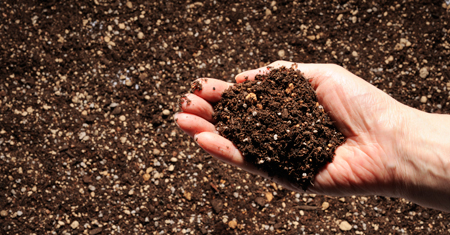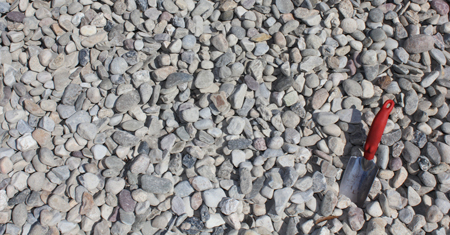Mulching is one of the best things you can do for vegetable and flower gardens, shrubs and trees, if done properly. It’s not only aesthetically pleasing but beneficial to the plants as well. The benefits of mulching include keeping weeds down and keeping moisture in the soil, thus requiring less watering. Using too much mulch will prevent water from reaching the roots and keep the soil cooler rather than warm enough.
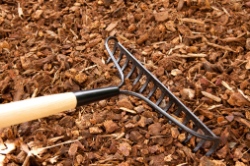 Proper mulching is important for plants under stress or newly planted ones without extensive root systems. To correctly apply mulches be sure to thoroughly remove all grass and weeds from the area where you are applying the mulch, then water well. When applying bark mulch to trees, start 6” from the base of the tree and work out to the desired diameter. Depth should start at 1” at the inner circle, increasing to no more than 4” (2” for clay soils) at the outer edge of the circle. Final depth may be reduced if landscape fabric is used under the mulch.
Proper mulching is important for plants under stress or newly planted ones without extensive root systems. To correctly apply mulches be sure to thoroughly remove all grass and weeds from the area where you are applying the mulch, then water well. When applying bark mulch to trees, start 6” from the base of the tree and work out to the desired diameter. Depth should start at 1” at the inner circle, increasing to no more than 4” (2” for clay soils) at the outer edge of the circle. Final depth may be reduced if landscape fabric is used under the mulch.
Excessive mulch material piled up against the base of a tree or shrub, keeps moisture in direct contact with the bark. The moisture penetrates the bark and suffocates the cells of the phloem, which is the layer of living tissue that transfers food up and down the plant. When this supply of food from the leaves is limited, the roots die back. This leads to less water being taken up, and the tree or shrub goes into general decline, leaf drop, and premature death.
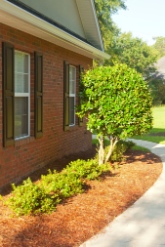 Secondary problems, like borers and fungi, will move into plants weakened by improper mulching. In sugar maples, the fungal pathogen Phytophthora will move in because of the high moisture around the trunk. This may create a canker symptom (sunken discolored and dead area) that girdles the trunk at the base, and hastens the decline of the tree.
Secondary problems, like borers and fungi, will move into plants weakened by improper mulching. In sugar maples, the fungal pathogen Phytophthora will move in because of the high moisture around the trunk. This may create a canker symptom (sunken discolored and dead area) that girdles the trunk at the base, and hastens the decline of the tree.
Each year additional mulch may be added to the previous year’s remaining mulch to maintain proper depth. Removal defeats one of the purposes of mulch, which is to decay and mix with the soil. Irrigating the old mulch before adding more will prevent it from forming a hard surface that deflects water.
Some of the same mulching principles apply to flowers. It’s too easy to shovel huge fork loads over plants. Don’t cover perennials, or you may smother them. Keep mulch out of the center crown of the shrubs and other plants. This is especially true for shallow-rooted species such as yarrows and many bellflowers. Do not mulch perennial beds too 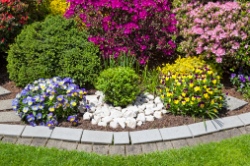 early in the spring before shoots emerge. Mulching over peonies more than an inch or two may keep them from blooming.
early in the spring before shoots emerge. Mulching over peonies more than an inch or two may keep them from blooming.
Some people lay landscape fabric down before applying mulch, water is able to permeate the fabric and reach the plant roots. If you lay black plastic, make sufficient holes for the water to reach the plants, then lightly mulch over the top with bark or other material. A similar method can be used with annuals or in vegetable gardens with thick layers of newspapers (they are easier to lay if moistened), then covered with rotted sawdust, wood shavings, or similar. Of course the paper will rot and can then be tilled back into the soil, adding further organic matter.
Tags: how to mulch




